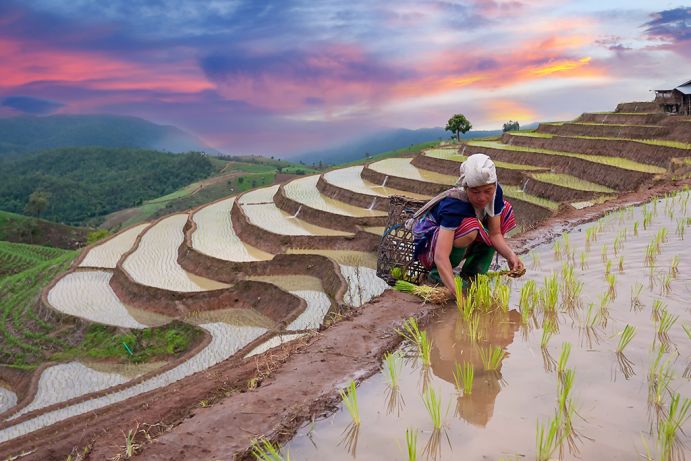Water as a Global Resource (GRoW)
Population growth, climate change, and drinking water scarcity make sustainable use of water resources one of the greatest challenges of the 21st century. To contribute to resolving the emerging conflicts related to the “blue gold”, the BMBF has initiated the “Global Resource Water (GRoW)” funding measure on the basis of the Agenda 2030.
In 2016, leading business representatives rated water insecurity as the largest global risk of the next 10 years. Two-thirds of the global population already live in areas where they experience at least one month of water scarcity per year. Natural reserves of clean water are used up faster than they can be replenished. This over-use of global water resources leads to conflicts that can only be solved by using water more efficiently, thus improving living standards in affected regions.
The United Nations have taken account of the global importance of water resources in the Agenda 2030 for Sustainable Development, formulating it in Sustainable Development Goal (SDG) 6: "Ensure availability and sustainable management of water and sanitation for all". SDG 6 envisions that, by 2030, all people have access to clean drinking water and adequate sanitary systems, while simultaneously preserving or enhancing water-bound ecosystems as the natural bases for life.
With the funding measure "Water as a global resource (GRoW)", a component of the BMBF strategy "Research for Sustainable Development (FONA)", the Federal Ministry of Education and Research (BMBF) contributes to the achievement of SDG 6. More than 90 academic, business, and other practical institutions were involved in the measure as part of 13 joint research projects until mid-2022. They developed new approaches to improve good governance in the water sector. In September 2022, the GRoW follow-up projects OUTLAST and SPS-Blue Nile were launched.
Characteristic of the funding measure is the combination of local and global action. In times of global trade, the needs of local people are linked with the needs of people on the other side of the planet: the trade in virtual water means that local and regional water resources and systems are now globally networked. The various joint projects are therefore not only conducting research on local and regional solutions, but are also developing improved global information on and projections of water resources and water needs.
Last updated on




